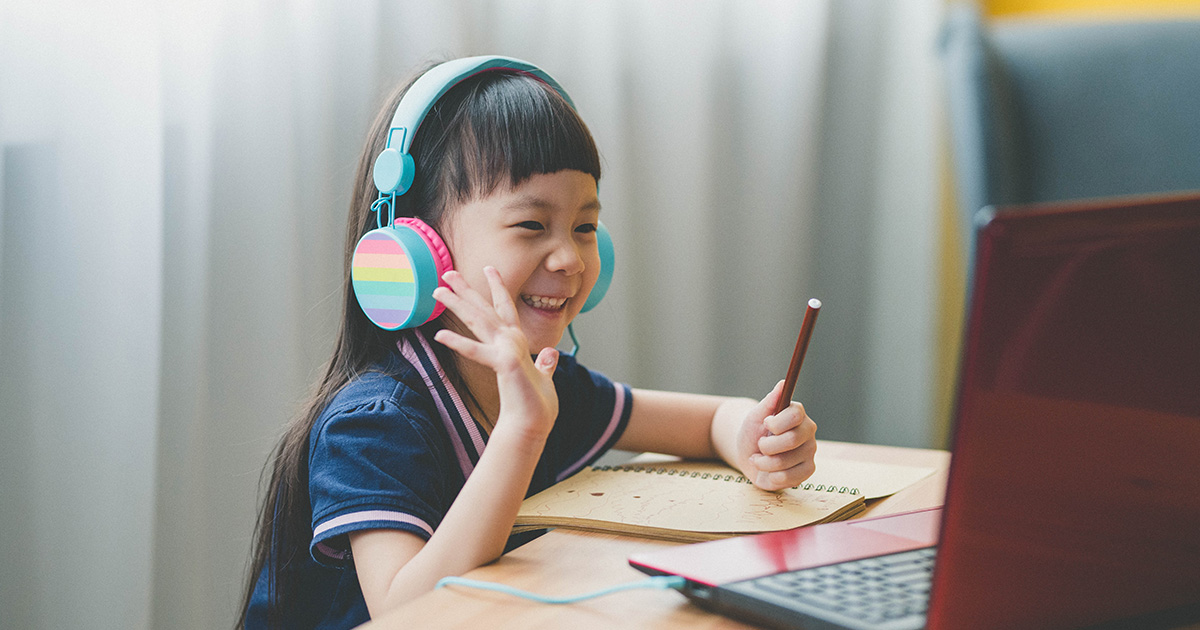Problem: Nearsightedness.
Nearsightedness (trouble seeing things clearly at a distance) is on the rise worldwide, and recent studies suggest that spending a lot of time looking at anything up-close – like books, toys, art projects, and yes, screens – is partly to blame. Our eyes work harder to focus on anything closer than two feet. Over time, without breaks, this can potentially affect eye development.
Solutions:
- Encourage distance viewing. Place screens about two feet away, and at eye level or lower. Tip: Measure and mark a spot for with tape on your child’s home office desk showing where they should place devices.
- Change up activities. Make sure your child spends enough time outdoors, where they’ll naturally be able to look into the distance and relax their eyes. Don’t forget sunglasses to protect eyes against UV exposure!
- Take breaks. Practice the 20-20-20 rule, explained above.
> Related: 10 Digital Detox Tips for Teens
Problem: Trouble sleeping.
Sleep is key for your child’s healthy development. But using screens close to bedtime has been shown to get in the way of a good night’s sleep.
Solutions:
- Prepare for bedtime. Make a rule for no screen-time at least an hour before bed, especially for younger kids.
- Maintain a good sleeping environment. Keep screens out of your child’s bedroom.
> Related: 3 Bedtime Challenges Your Kids Might Be Having Now – and How to Solve Them
Get regular eye screenings for your child.
For your child to do well in school – whether in the classroom or distance learning – they need to be able to see well. So make sure to talk to your pediatrician about any vision concerns. If your child is having problems, schedule a check-up with an ophthalmologist or another pediatric vision specialist.

